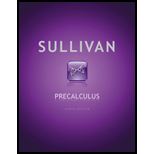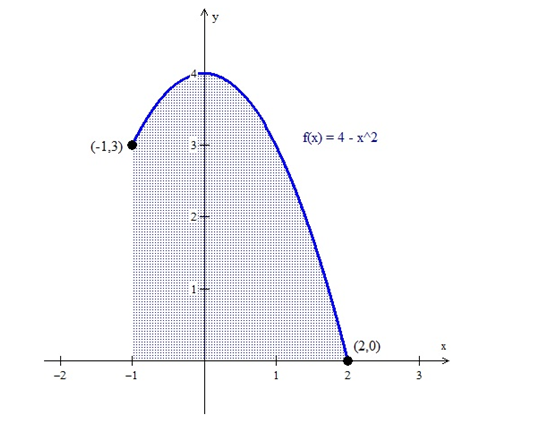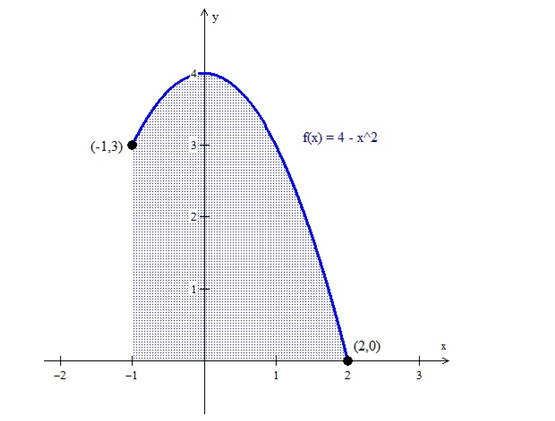
a.
Graph
a.
Answer to Problem 77RE

Explanation of Solution
Given information:
A function
Graph
Calculation:
The function
Graph

b.
Approximate the area A by partitioning
b.
Answer to Problem 77RE
Explanation of Solution
Given information:
A function
Approximate the area A by partitioning
Calculation:
Approximate the area A under
The area under
Where
Partition the interval
Because we’re using the left endpoint of the subintervals,
The area under the graph of
c.
Approximate the area A by partitioning
c.
Answer to Problem 77RE
Explanation of Solution
Given information:
A function
Approximate the area A by partitioning
Calculation:
First calculate by plugging in and
Partition the interval
Because we’re using the left endpoints of the subintervals,
Hence, the area under the graph of
d.
Express the area A as a integral.
d.
Answer to Problem 77RE
Explanation of Solution
Given information:
A function
Express the area A as a integral.
Calculation:
Write the area A under
Hence, the area under the function
e.
Use a graphing utility to approximate the integral.
e.
Answer to Problem 77RE
Explanation of Solution
Given information:
A function
Use a graphing utility to approximate the integral.
Calculation:
On a graphing utility enter the function
Hence, after hitting enter, the calculator finds that
Chapter 14 Solutions
Precalculus
Additional Math Textbook Solutions
Calculus: Early Transcendentals (3rd Edition)
Glencoe Math Accelerated, Student Edition
Precalculus (10th Edition)
University Calculus: Early Transcendentals (3rd Edition)
Precalculus
 Calculus: Early TranscendentalsCalculusISBN:9781285741550Author:James StewartPublisher:Cengage Learning
Calculus: Early TranscendentalsCalculusISBN:9781285741550Author:James StewartPublisher:Cengage Learning Thomas' Calculus (14th Edition)CalculusISBN:9780134438986Author:Joel R. Hass, Christopher E. Heil, Maurice D. WeirPublisher:PEARSON
Thomas' Calculus (14th Edition)CalculusISBN:9780134438986Author:Joel R. Hass, Christopher E. Heil, Maurice D. WeirPublisher:PEARSON Calculus: Early Transcendentals (3rd Edition)CalculusISBN:9780134763644Author:William L. Briggs, Lyle Cochran, Bernard Gillett, Eric SchulzPublisher:PEARSON
Calculus: Early Transcendentals (3rd Edition)CalculusISBN:9780134763644Author:William L. Briggs, Lyle Cochran, Bernard Gillett, Eric SchulzPublisher:PEARSON Calculus: Early TranscendentalsCalculusISBN:9781319050740Author:Jon Rogawski, Colin Adams, Robert FranzosaPublisher:W. H. Freeman
Calculus: Early TranscendentalsCalculusISBN:9781319050740Author:Jon Rogawski, Colin Adams, Robert FranzosaPublisher:W. H. Freeman
 Calculus: Early Transcendental FunctionsCalculusISBN:9781337552516Author:Ron Larson, Bruce H. EdwardsPublisher:Cengage Learning
Calculus: Early Transcendental FunctionsCalculusISBN:9781337552516Author:Ron Larson, Bruce H. EdwardsPublisher:Cengage Learning





